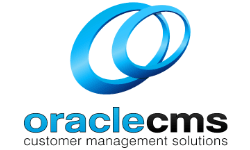2022 Australian Contact Centres Best Practice report
For the past three years, the team at SMAART Recruitment have produced the most comprehensive report on the Australian contact centre industry and the 2022 Australian Contact Centre Industry Best Practice Report has again raised the bar in gaining insights into the local contact centre industry.
From 46 pages in 2019, this year’s report contains a massive 236 pages and is packed full of great insights, data, case studies with over 250 contact centres contributing to the report as well as close to 1,00 individual submissions making it by far the most robust and reliable industry information we have available to date.
With COVID presenting a number of unique challenges for the industry, as well as some new categories, there is plenty of fascinating data and insights and we’ve provided a summary of some of the key information from the full 236-page report below.
Demographics
The 2022 Australian Contact Centres Best Practice report would not be possible if it weren’t for the strong industry participation with over 200 senior managers, 200 team leaders, 600 frontline agents, 50 workforce managers and 30 recruiters all contributing to the report.
The contact centres in Australia that completed this year’s survey range from smaller contact centres through to some of the large corporates across a range of industry sectors including Banking and Finance (20%), Utilities (16%), Insurance (12%), Public Service (11%) through to Not For Profits, Education, Retail and so on.
Vic Metro was the most popular location and in this year’s report, over 31% of respondents reported having a regional contact centre.
Contributing Authors and Companies
Pulling together such a comprehensive report is no easy task and James Witcombe from Smaart Recruitment (and National Advisory Board Member of ACXPA) has done another brilliant job, supported by a range of local industry experts who all contributed to the writing of the report along with providing some commentary on key findings, best-practice tips and future predictions.
Contributing experts to the 2022 Australian Contact Centre Industry Best Practice Report are:
- Daniel Harding, MaxContact (Remote Working)
- Tim Buzza, Attune (Absenteeism and Attrition)
- Leanne Robinson & Daniel Panozzo, Aspen Solutions (Employee Engagement)
- Sean McGinn, The Agile Contact Centre (Modern Ways of Working)
- Ian Harrison, Verint (Technology Adoption)
- James Xuereb, Clevetar (Artificial Intelligence)
- Tom Ruijs, AP Psychology (Mental Health & Wellbeing)
- Brendan Maree, 8×8 (Customer Experience)
- Nimesh Dhanak, CallDesign (Workforce Planning and Optimisation)
- Kunal Rahalkar, Datagamz (The role of the Agent)
- Justin Tippett, Australian Customer Experience Professionals Association (The role of the Contact Centre Manager)
Their support, and that of their respective companies, enables this report to be produced at no cost to the industry.
Key Findings from the 2022 Contact Centre Industry Best Practice Report
With 236 pages there is no shortage of information available!
We’ve pulled together some of the key findings for you below by key sections but you can obtain a free copy of the full report, as well as a digital version that is continually updated with new research, information and trends by reaching out directly to Smaart Recruitment (will open a new window and you will need to provide your contact details to access the report).
Jump directly to Key Sections:
- Remote Working
- Absesentieeim & Attrition
- Employee Engagement
- Modern Ways of Working
- Contact Centre Performance
- Technology Adoption
- Artificial Intelligence
- Mental Health & Wellbeing
- Customer Experience
- Offshoring Trends
- Recruitment
- Workforce Planning and Optimisation
- The role of the Agent
- The role of the Team Leader
- The role of the Contact Centre Manager
- Salaries and Bonuses
- Conclusion
2022 Contact Centre Industry Best Practice Report Key Sections
Remote Working
There is no question that COVID rapidly changed the work-from-home dynamics in most industries and contact centres certainly saw some rapid change.
It is important to note that the survey for the 2022 Australian Contact Centres Best Practice report was completed towards the end of 2021 when NSW and Victoria in particular were still in lockdowns. However, post lockdowns ending, many contact centres have continued having a high percentage of staff working from home.
- During COVID lockdowns, close to 76% of contact centre agents worked from home.
- Post-COVID lockdowns, approx 48% of employees are continuing to work from home.
- 58% of contact centres are offering high-to-full flexibility in the requirements from working from home and it’s a sought-after requirement for many employees when looking to change roles.
- 44% of centres claim it is just as effective working from home as compared to in the office, 36% claim it’s slightly less effective and 9% claim it’s more effective.
- Mental Health is the biggest concern for contact centre managers (20%) followed by Employee Engagement (13%) when running a work-from-home workforce.
- Absenteeism is 52% lower when using a work-from-home workforce.
- 87% of contact centres have the ability for Team Leaders/Quality Assurance to listen and coach during live calls.
- 66% of contact centres reported no change to Customer Satisfaction results, 15% reported slightly higher customer satisfaction when agents are working in the contact centre versus 6% when agents are working from home.
Absenteeism & Attrition
Managing absenteeism and attrition has never been far from most contact centre managers’ minds with the industry typically experiencing a higher average than a number of other sectors.
With work-from-home now a key feature of the industry, recruitment challenges throughout all industry sectors and so on this year’s 2022 Australian Contact Centres Best Practice report did offer up some changes, however, it’s hard to gauge if this is to become the new ‘normal’ or just a symptom of the current landscape.
Absenteeism
- Average absenteeism reduced from 10% in last year’s report to 9.2%.
- Leading causes of absenteeism was an increase in illness (26%), an increase in the challenge of work (16%) and a seasonal spoke in work (11%).
- Comparing absenteeism to pre-COVID rates, 25% of contact centres reported higher rates, lower (47%) and the same (28%).
- 73% of respondents reported that absenteeism has improved with greater flexibility.
Attrition
- 26% is the average attrition rate over the past 12 months.
- 52% of contact centres averaged between 10 and 30% attrition.
- 17% of contact centres averaged 50% or higher.
- Best practice attrition is less than 10% (approx 20% of contact centres)
- 39% of agents leave for internal roles, 61% leave the company altogether.
- Pursuing a different career (30%), Personal Reasons (19%) and Financial Reasons (16%) are the primary reasons for agents leaving.
- Overall retention after 12 months from first hire has dropped from 73% to 69% from the previous year.
Employee Engagement
Close to 60% of survey respondents to the 2022 Australian Contact Centres Best Practice report reported having tools to specifically measure employee engagement within the Contact Centre, with 25% of them being real-time pulse surveys. Over 70% of Contact Centres use organisational-wide surveys to measure employee engagement and 15% have no formal way to measure employee engagement.
- 64% of centres share the results with frontline employees and actively engage with them to develop actions and initiatives, 17% of centres do not share the results outside of the leadership team.
- The average employee engagement score was 75.6/100 with best practice (top 10%) having employee engagement scores of 88 or above.
- 52% of contact centres claim their employee engagement scores have improved from the previous year.
- Leading contributors to improved scores are better communication (30%), flexible working arrangements (18%), increased activities (17%) and greater development (14%).
- When asked on a scale of 1 to 10 how likely are you to recommend your organisation as a place of employment to your family and friends (which savvy readers will note is a Net Promoter Score question), the average score was 8.3 or an Employee Net Promoter Score of +38.
Modern Ways of Working
You may have heard of terms like Agile Contact Centre which is bringing a new methodology in how contact centres are managed. This section in the 2022 Australian Contact Centres Best Practice report explored new ways of thinking and how aligned managers and employees are with the business objectives.
- 88% of respondents were clear about the purpose of the organisation.
- 97% of respondents were clear on how their role brings that purpose to life.
- 90% of contact centre managers say they are fulfilled by their work.
- 72% of managers felt they could be better aligning and delivering goals.
- Only 34% of managers felt like they were spending enough time working on strategy (next 1 to 3 years)
- 35% of interactions into a contact centre were driven by failures of the business.
- 25% of contact centres felt the true value they deliver is not well understood by their organisation.
Contact Centre Performance
With many retail fronts and offices closed during lockdowns, the contact centre often became the sole contact point for many businesses.
- The Average Speed of Answer across the industry was 132 seconds with 11 to 30 seconds the most common (29%). 11% of contact centres averaged between 0 to 10 seconds to 6% of contact centres taking in excess of 8 minutes.
- The Average Abandonment Rate was 7% with 3-4% the most common (33%). Of note, 15% of contact centres had abandonment rates in excess of 15%.
- 80/30 is the most common Grade of Service metric followed by 80/30 however there is very wide spread of targets. Across all GOS targets, 38% of contact centres reported they were not achieving their target.
- The metrics given the greatest importance by contact centres were:
- Grade of Service (23%)
- NPS or CSAT (22%)
- Sales or Conversions (14%)
- Average Speed of Answer (13%)
- Abandonment Rate (12%)
- First Call Resolution (12%)
- The Average Customer Satisfaction Score is 75 (out of 100).
Technology Adoption
Technology continues to play a significant role in the modern contact centre and this year is no exception. In this year’s 2022 Australian Contact Centres Best Practice report we gained some specific insight into how technology is continuing to evolve.
- Call Recording has the largest adoption of contact centre technology (outside of the core platform) with 70% of contact centres now using Call Recording technology.
- Speech Analytics (25%), Automated Quality Management (18%), Real-Time Agent Assist (17%) and Robotic Process Automation (RPA) (13%) are starting to feature in contact centres and that trend is expected to continue to rise with approx 8% of contact centres planning to invest in these technologies in 2023.
- Somewhat considered standard kit, adoption in the following technologies is common including Workforce Management (50%), Cloud Based CRM tools (47%), Email Management (45%) Enterprise Knowledge Management (33%) and Intelligent Virtual Assistants/Conversation AI (13%). The technology flagged by most respondents for investment in 2023 was Intelligent Virtual Assistants/Conversation AI with 15% planning on investing followed by Enterprise Knowledge Management (8%).
- Contact Centre as a Service (CCaaS) is also becoming commonplace with 30% of contact centres now relying on third parties to deliver and maintain their contact centre infrastructure and software.
- Gamification is also firmly on the radar with 10% of contact centres already using gamification and just over 9% planning to invest in 2023.
Artificial Intelligence
Artificial Intelligence is becoming widely adopted throughout society with general acceptance and usage increasingly thanks to mainstream applications such as Apple’s Siri, Tesla, and so on.
- When we mention Artificial Intelligence in a contact centre setting, it predominately relates to Chatbots and Virtual Assistants (53%), Speech Analytics (40%), IVR Natural Language (35%) and Predictive Call Routing (30%). Notwithstanding, overall use of Artificial Intelligence within contact centres is currently low but expected to increase:
- Currently using AI to a high level (1%)
- Currently using AI is an experimental way (10%)
- Currently using AI to a low to moderate level (23%)
- Not using AI currently but looking to implement in 2023 (35%)
- No plans to implement (27%)
- Don’t know/unsure (3%)
- Of those using AI, in relation to whether AI has helped them improve their customer satisfaction scores:
- 26% said yes.
- 24% said no.
- 46% were unsure.
- 4% other.
- 53% of contact centre respondents reported that AI enabled them to reallocate resources to where they were better suited.
- 68% of respondents plan to invest more in AI solutions in the future.
- 81% believe AI will help human agents rather than replace them.
Mental Health & Wellbeing
With the toll of lockdowns still present it’s not surprising that mental health and well-being is a big focus area for society as a whole and that extends to the contact centre industry where changes to working arrangements, reduced staffing, changes to support structures etc have all contributed to significant changes.
- When asked to define the impact of COVID on mental health and well-being in the workplace, 76% of respondents responded it has been negatively impacted, 22% were mostly not affected and 2% were positively impacted.
- When concerns have been raised concerns about the impact of psychological safety/mental health of employees 69% of contact centres strongly agree there is a full and immediate investigation, and 24% agree.
- 91% of contact centres have a good understanding of what defines mental health and mental ill health.
- 91% of respondents either strongly agree (33%) or agree (58%) that they can positively impact psychological safety and mental health in the workplace.
- There is still a stigma surrounding mental health in the workplace however 74% of respondents do not believe there is a stigma and only 4% strongly agree.
- In general, most respondents believe there has been an increase in workload due to COVID – strongly agree (26%), agree (24%) and slightly agree (21%).
- 90% of respondents believe people treat each other with respect in their organisation (just 2% slightly disagreed).
Customer Experience
There has been a lot of talk over the years about the importance of the Customer Experience and the role the contact centre plays in contributing to the overall result.
- The most common metrics used to measure Customer Experience are Net Promoter Score (NPS) (62%), Customer Satisfaction (CSAT) (53%), Retention Rate (28%), Customer Churn(16%) and Customer Effort Scores (CES) (15%) the most common. Internally Developed Metrics (24%) also rated highly signifying some potential maturity about the value drivers that are important for some businesses.
- Immediate After-Call Survey usage has increased from 45% to 50% from the previous year.
- Email continues to be the most popular method to capture customer satisfaction with 62% followed by a post-call survey 35%.
- 11% to 15% is the most common response rate for email surveys and 19% for post-call surveys.
- Only 24% of contact centres are using Speech Analytics to improve customer insights or assist with quality management processes.
- 39% of contact centres have integrated tools enabling them to communicate with customers across multiple channels, 48% of contact centres use independent communication channels depending on what the customer selected.
- 43% of respondents report more than 5 metrics to senior executives, an increase from 34% last year.
- 3-4 calls per month per agent is the most common number of calls assessed for quality, with an increase in the frequency of centres measuring between 5 to 10 calls. The number of centres assessing more than 10 calls has dropped compared to the previous year.
- There has been a slight increase in contact centres using a Knowledge Management Platform (54% up from 50% last year).
Offshoring Trends
During COVID there was a significant pivot with the use of offshore contact centres as many common outsourcing destinations (i.e Philippines) were significantly impacted which flowed onto many Australian organisations left with little to no contact centre support.
- Compared with PRE-COVID levels (~Feb 2020), 16% of contact centres have reduced offshoring, 29% have increased offshoring and 55% reported no change.
- When asked if the benefits of onshoring back to Australia have outweighed the costs:
- 33% said yes
- 11% said no
- 56% claim its too early to tell.
It’s important to note that when reviewing the results in this section it is important to note that this report sought responses only from organisations with Australian-based contact centres. Therefore the responses here may not be completely reflective of the whole industry.
Recruitment
When talking with most contact centre leaders throughout 2022 there is one constant challenge that emerges – recruitment!
- The top challenges for recruitment are the low volume of applicants (68%), salaries not competitive (36%), and workload being too high for the talent team/headcount (25%) followed closely by the challenges of hiring and onboarding remotely (18% respectively).
- On average, one member of a recruitment/talent team has 10 to 20 vacancies they are trying to fill at any one time and 32% of internal recruiters have more than 50 or more vacancies they are trying to fill at any one time.
- 42% of contact centres estimate that will be recruiting more agents across 2022 (or at least trying to!), 15% less and 42% about the same.
- 46% of contact centres expect to increase their hiring of remote workers, and only 12% expect it to decrease.
- When it comes to the quality of candidates hired, 46% reported a decrease in quality, 38% about the same and 15% cited an improvement.
- 62% of organisations understand the challenges with recruiting contact centre agents in the current market yet 38% underestimate just how tough it is.
- Recruitment agencies fill around 17% of contact centre vacancies and around 25% of contact centres rely on recruitment agencies to fill 30% or more of their vacancies.
Workforce Planning & Optimisation
A new inclusion for the 2022 Australian Contact Centres Best Practice report, Workforce Panning & Optimisation provides insights into a critical contact centre function that is designed to maximise the efficiency of your workforce.
- 90% of the contact centres that responded have dedicated workforce planning processes in place.
- The larger the contact centre, the more dedicated people work in a workforce management role ranging from 1.3 people for contact centres with 0 to 50 seats through to 18.5 people for contact centres with 1000+ seats.
- Workforce Manager (77%), Scheduler (71%), and Real-Time Analyst (63%) are the most common Job Titles/roles.
- 50% of Workforce Management employees started their career on the phones.
- 88% of new hires for WFM roles receive in-house training for the WFM system and 60% receive in-house training on best practice WFM principles.
- Just 13% of new WFM hires receive third-party training on best-practice WFM principles.
- The most popular vendor systems for Workforce Management are Genesys (40%), Microsoft Excel (35%), Aspect/Alvaria (33%) and Verint (27%).
- For contact centres without a WFM platform, 67% are looking to invest and of those, 43% are looking to invest over the next 12 months.
- Forecasts are mostly created in a Workforce Management System (48%) or Excel (46%) with 96% measuring forecast accuracy with Daily intervals the most common (40%).
- With regards to the types of rosters offered to agents, 62% provide a fully flexible roster (agents have control over the shifts they work), 70% use preference based, 92% have fixed rosters, 89% use rotating shifts.
- The most common notice period for shift times is 4 weeks (67%) followed by 3 weeks and 6 weeks (10% respectively).
- Scheduled Adherence is a performance metric for 86% of agents with 91% the most common Adherence to Schedule target for agents.
The Role of an Agent
In another first for the 2022 Australian Contact Centres Best Practice report, significant effort was extended to understand the perspectives of frontline agents and over 600 frontline agents responded from a range of different-sized contact centres. Interestly, there is not always clear alignment with some of the data reported earlier which suggests there may be a disconnect in some centres with what the management team believe and what the frontline agents actually experience.
- 50% of agents believe they only have a small say in how they go about delivering on the purpose/work with 35% stating they have a large say.
- When asked if they had a choice of what percentage could they work from home the most common response was:
- 100% of the time (30%)
- 90 to 99% (15%)
- 80 to 89% (14%)
- 50 to 59% (10%)
- Not having to travel (35%), the overall convenience (26%) and the sense that I am trusted (9%) and getting my work done more effectively (9%) were the most common benefits cited for working from home.
- Since COVID, 28% of agents feel less connected, 55% about the same, 17% more connected.
- Initiatives valued the most to improve engagement were:
- Virtual Team Activities (36%)
- Gifts such as hampers, gift cards etc. (23%)
- Increased shift flexibility (18%)
- Professional development (16%)
- Health and wellbeing programs (14%)
- Additional days of paid leave (14%)
- 3.9 hours is the average amount of time being coached each month with 22% stating this is not enough and 17% are unsure.
- When considering career aspirations within contact centre where the agent was working:
- Aiming for a Team Leader role (12%)
- Aiming for a specialised role in the contact centre (30%)
- Stay with the company but outside of the contact centre (26%)
- Not sure yet, not looking beyond my current role (25%)
- Not planning on staying in this organization beyond the current role (7%)
- The two most common reasons they believe other frontline agents leave:
- Pursue a different career (47%)
- Dissatisfaction with the work (45%)
The Role of a Team Leader
Often described as the most important role in the contact centre, the contact centre team leader certainly has one of the most demanding roles and they can have a huge influence on your contact centre’s culture and performance.
- The majority of Team Leaders find their job fulfilling (32%) and quite fulfilling (57%).
- The requirement to take calls:
- Yes (18%)
- No (15%)
- Only occasionally (16%)
- Very rarely (7%)
- Only escalations (45%)
- Team Leaders identify coaching and development as their most important duty (11%) however 40% of Team Leaders don’t believe they have enough time to execute it.
- 48% of Team Leaders believe they spend too much time in meetings followed by dealing with remote issues (29%) and reporting and analysis (22%).
- The duties most contact centre Team Leaders would like to remove from their job:
- Dealing with remote working issues (49%)
- Coordination/rostering (46%)
- Dealing with escalations (23%)
- 91% of Team Leaders have KPIs they need to meet with Quality, Average Handling Time, Adherence and productivity metrics all prominent.
- Most Team Leaders (80%) feel they are well equipped to manage agents remotely, 11 (%) are not well equipped, and (5%) are not well equipped but feel they are getting there.
- The most common frequency for one on ones with agents is monthly (37%) followed by fortnightly (34%).
- 30% of Team Leaders receive no training to increase their skills as a Team Leader with the next most common quarterly (27%).
- 52% of contact centres have no structured and ongoing learning and development program for Team Leaders.
- Career aspirations over the next 3 years:
- Happy to just focus on being a Team Leader (20%)
- Advance my career within this contact centre (40%)
- Advance my career within another contact centre (7%)
- Advance my career in the same organisation, but outside of the contact centre (21%)
- Leave the contact centre industry (4%)
- Unsure (7%)
Salaries and Bonuses
With the challenges in recruitment well documented it’s not surprising to learn there has been an increase in both salaries and bonuses for contact centre employees with some of the key findings below.
- The most common frontline role (customer service) has increased by approximately 5% on the previous year to an average of $55,800 + Super.
- Over 40% of frontline agents surveyed also reported receiving some form of bonus/commission up significantly from the previous year with $4,150 the average bonus.
- Senior Customer Service ($61,750 + super), Collections ($62,700 + super) and Helpdesk Level 2/Senior ($66,500 + super) were the top-paying roles.
- Customer Service Team Leader roles have risen by 10% with the average base salary now $82,200 + super and an average bonus of $10,585. Team Leaders working in an Outsourcer/BPO however sit approx 20-25% below the average.
- Workforce Planning leads are also in high demand with an average salary of $124,800 plus super.
- Senior roles are also in high demand but there is a wide range in definitions that can significantly influence salaries but as a guide, salaries range from a Customer Service Manager ($119,500 + $13,200 average bonus + super) through to a General Manager in excess of $200,000 + $66,100 average bonus + super).
Conclusion
There is no question there is a significant amount of diversity in the Australian Contact Centre Industry and one of our aims at ACXPA is to continue to provide you with valuable information to help you benchmark, learn and share so we can all prosper as an industry.


























